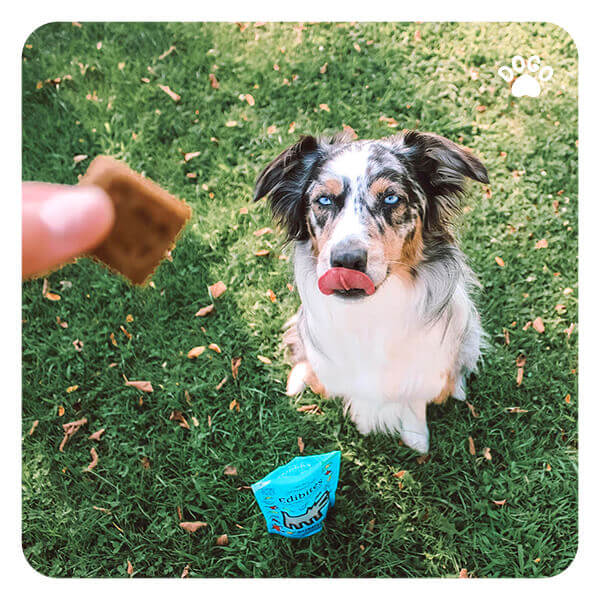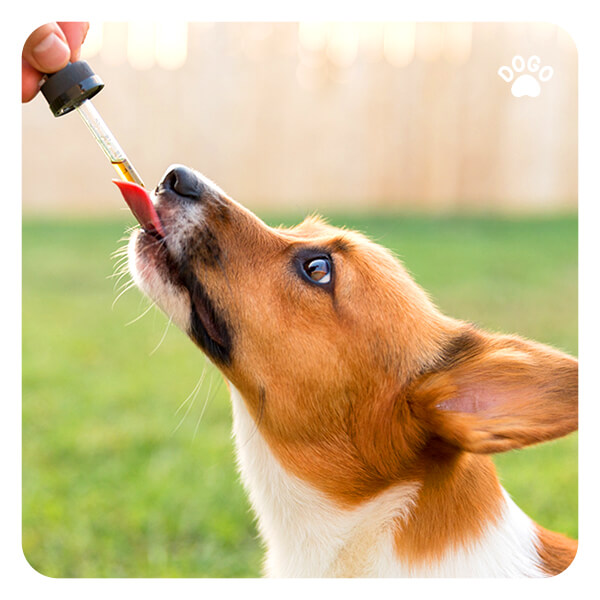How CBD Can Help Make Dog Training Sessions Easier
Post Date:
July 18, 2024
(Date Last Modified: November 13, 2025)
Cannabidiol (CBD) and canine training intersect across biology, behavior, products, and clinical practice. Clear, practical information about mechanisms, dosing, and safety can help owners and trainers make informed choices.
Understanding CBD and the Canine Endocannabinoid System
CBD (cannabidiol) is a nonintoxicating phytocannabinoid found in hemp and cannabis plants; legally, hemp in the United States is defined by a THC concentration below 0.3% by dry weight[1].
THC (tetrahydrocannabinol) is the primary psychoactive cannabinoid, while CBD does not produce the same intoxicating effects at typical concentrations and interacts differently with the body’s receptors[1]. The canine endocannabinoid system (ECS) includes cannabinoid receptors (CB1 and CB2), endogenous ligands, and metabolic enzymes; CB1 receptors are concentrated in the central nervous system and influence mood and cognition, while CB2 receptors are more common in peripheral immune tissues and modulate inflammation[1].
Pharmacologically, CBD may modulate anxiety and inflammation through indirect actions on ECS signaling, effects on serotonin receptors, and reductions in inflammatory mediators; these pathways are potential routes by which CBD could influence behavior and comfort in dogs[1].
How CBD May Affect Behavior and Learning
Lowering baseline anxiety and arousal can improve a dog’s readiness to learn because high stress impairs attention and memory consolidation; controlled veterinary studies in dogs have evaluated behavioral and pain-related outcomes at defined dosing levels, including trials that used 2 mg/kg per day for osteoarthritis-related pain reduction[2].
By reducing nociceptive input from chronic pain, CBD may indirectly increase participation in training tasks that require mobility or focus, an effect demonstrated at clinically studied dose ranges in selected trials rather than proven broadly across all behavioral diagnoses[2].
Mechanistically, CBD’s modulation of stress reactivity could support faster extinction learning in fear-based responses by lowering sympathetic arousal during controlled exposures, though neural mechanisms in dogs are not fully mapped and require more species-specific research[2].
Training Challenges CBD Can Help Address
CBD is discussed as an adjunct for problems where anxiety, fear, or pain hinder training—examples include separation-related distress, noise sensitivities, and generalized fear responses. For noise events, giving a calming agent with an appropriate onset window (see timing below) is sometimes used as part of a broader behavior plan[3].
For overexcitement and attention-seeking behaviors, reductions in baseline arousal may make reward-based cues easier to reinforce, while pain-related resistance (for example due to osteoarthritis) that limits recall or mobility has been studied at defined therapeutic doses in veterinary trials[2].
Evidence and Research Overview
Controlled, peer-reviewed studies in dogs exist but are relatively few; key clinical trials have examined conditions such as osteoarthritis and epilepsy at specified doses, with some positive outcomes reported at 2 mg/kg per day for osteoarthritis in a randomized trial design[2].
Extrapolation from human studies can be informative for mechanisms but has limits because pharmacokinetics and receptor distributions differ between species; therefore veterinary guidance tends to rely on canine-specific trials where available and conservative clinical experience elsewhere[2].
Major veterinary and animal health organizations emphasize the need for higher-quality canine studies and consistent product quality; professional guidance typically recommends careful evaluation and veterinary oversight before starting products because evidence quality and product consistency vary across the marketplace[3].
Choosing High-Quality CBD Products for Dogs
Product type influences content and potential effects. Common categories are full-spectrum (contains minor cannabinoids and trace THC), broad-spectrum (cannabinoids without THC), and isolate (pure CBD); each has advantages and tradeoffs for efficacy and legal/regulatory exposure[4].
- Full-spectrum: potential “entourage” effects but contains trace THC; carries a small regulatory risk in some contexts[4].
- Broad-spectrum: retains multiple cannabinoids without THC, balancing diversity of actives with reduced psychoactive risk[4].
- Isolate: predictable CBD-only dosing but lacks other plant compounds that may modulate effects[4].
Third-party certificates of analysis (COAs) that report CBD and THC concentrations, plus testing for pesticides and heavy metals, are essential for quality assurance; professional organizations recommend verifying COAs before use and favoring products with transparent batch testing[4].
Packaging, carrier oils (e.g., medium-chain triglyceride oil), flavoring, and delivery format should be matched to the dog’s size and feeding habits to ensure accurate dosing and consistent intake[3].
Proper Dosage and Administration Methods
Clinical dosing approaches commonly follow “start low, go slow” with weight-based calculations; many veterinary sources suggest initial doses around 0.2–0.5 mg/kg per dose, administered once or twice daily while monitoring for effect and side effects[3].
Some controlled studies and reports have used higher daily totals (for example, 2 mg/kg per day in one osteoarthritis trial), but higher dosing should be under veterinary supervision due to potential liver enzyme changes in some dogs[2].
For practical dosing conversions, product concentration matters: a common tincture concentration is 10 mg CBD per mL, so a target dose of 0.5 mg/kg converts to 0.05 mL/kg per dose using the formula mL/kg = (mg/kg) ÷ (mg/mL)[3].
Formats include oils/tinctures (flexible dosing and often faster onset), treats/edibles (convenient but slower onset), capsules (accurate dosing but less flexible), and topicals (localized use for skin or joints); choice depends on training goals, onset requirements, and owner compliance[3].
| Format | Typical onset | Pros | Cons |
|---|---|---|---|
| Oil / tincture | 15–45 min | Adjustable dose, rapid sublingual absorption | Requires careful measuring |
| Treats / edibles | 30–90 min | Easy to give during training, palatable | Delayed onset, variable absorption |
| Capsules | 30–90 min | Consistent mg per dose | Less flexible for small dose titration |
| Topical | Variable | Targeted for joints or skin | Limited systemic effects for behavior |
Timing CBD with Training Sessions
Sublingual oils typically begin acting in about 15–45 minutes, while edible formats often require 30–90 minutes for peak systemic effect; planning the administration window helps match onset to training or anticipated stressors[3].
For predictable acute events (for example, a known fireworks period), giving an oral product within the recommended onset window before the event is standard practice; for chronic behavioral modification work, consistent dosing schedules (same time each day) are commonly used for several weeks while tracking progress[3].
Avoid doses that push a dog into excess sedation during learning tasks; if a dose causes noticeable lethargy, reduce by half and reassess under veterinary guidance[2].
Monitoring Effects and Measuring Progress
Establish a behavioral baseline using objective metrics—examples include latency to respond to a cue, number of correct responses per session, and frequency of stress signals—and document these before starting CBD so change can be measured over time; many trainers recommend a 2–4 week initial evaluation period at a stable dose for assessing behavioral response[4].
Training logs, video recordings, and regular communication between the owner, trainer, and veterinarian provide the best evidence of benefit or harm; if no meaningful change is observed after an agreed trial period, reassess the behavior plan and consider dose adjustment or discontinuation[4].
Risks, Side Effects, and Contraindications
Commonly reported side effects in dogs include mild drowsiness, transient gastrointestinal upset, and changes in appetite; liver enzyme elevations have been observed in some trials at higher daily doses, including examples reported with multi-milligram-per-kilogram regimens such as 10 mg/kg daily in safety-focused studies[2].
CBD is metabolized in part by cytochrome P450 enzymes and can interact with drugs that rely on those pathways, so concurrent medications—especially anticonvulsants, certain antibiotics, and some cardiac drugs—require a veterinary medication review before starting CBD[5].
Caution is advised in puppies, pregnant or nursing dogs, and dogs with known liver disease; many veterinary guidance statements recommend avoiding routine use in these populations without specialist oversight[5].
Working with Your Veterinarian and Trainer
Full disclosure to your veterinarian and trainer about any supplements is essential so dose decisions, medication interactions, and monitoring plans are coordinated; a baseline health screen including liver enzymes is commonly recommended prior to starting regular CBD in many clinical practices[4].
Integrate CBD as an adjunct to evidence-based behavior modification rather than a replacement for desensitization and counterconditioning protocols; if CBD appears to worsen behavior, causes adverse effects, or fails to produce measurable benefit within the agreed trial period, stop use and consult professionals for next steps including referral to a veterinary behaviorist[4].




